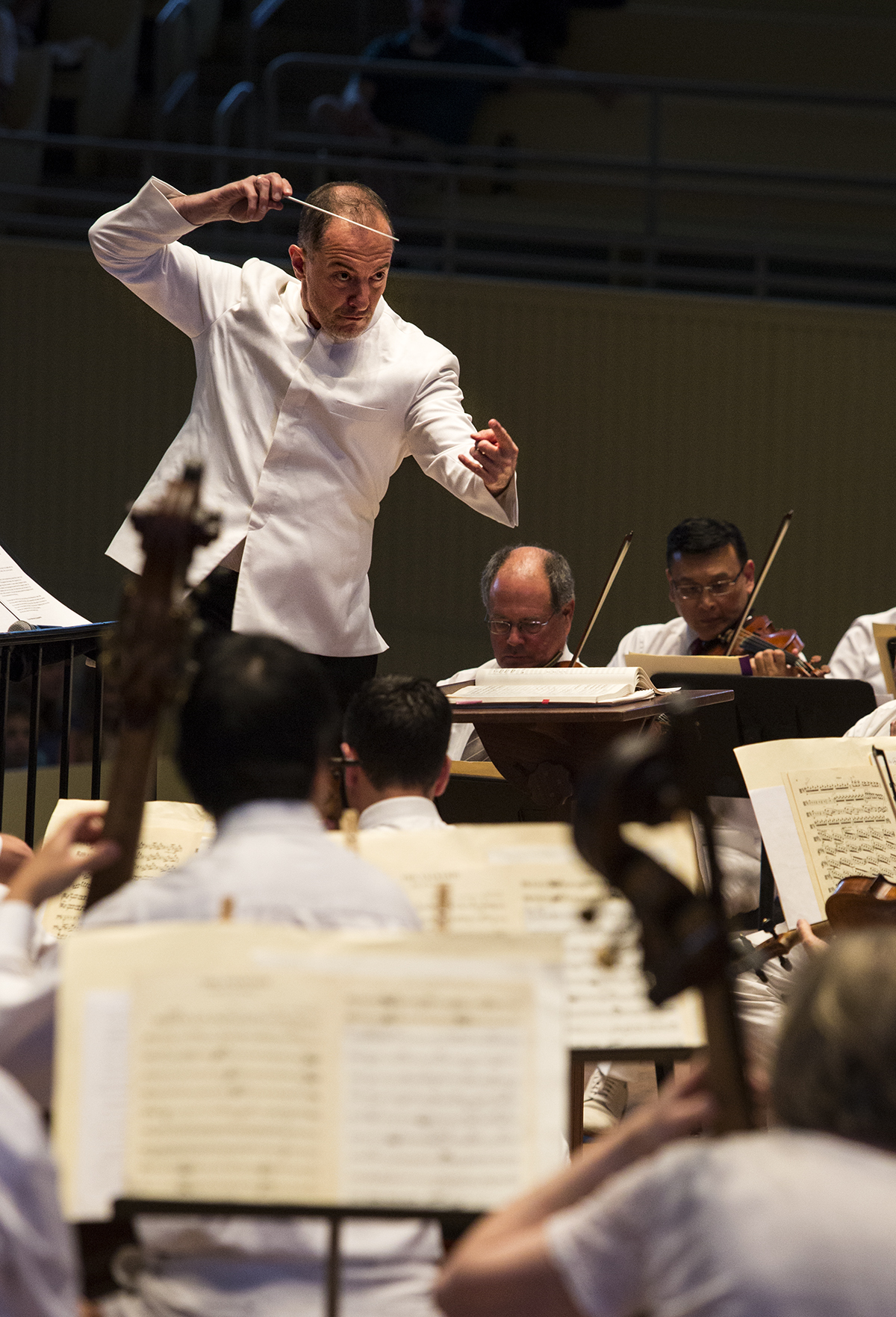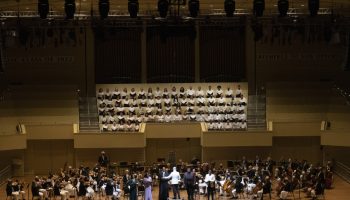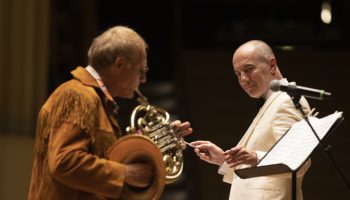There’s no such thing as just another Mahler symphony.
It’s one of the great paradoxes of the symphonic repertoire: Gustav Mahler would install himself in an idyllic cottage and write music in the summers, and then spend the rest of the year as a conductor. And yet, conductors find the markings in his symphonies to be both painstakingly specific and open to seemingly endless interpretations.
“There are a lot of instructions on how to conduct each part and how to work the balances,” said Chautauqua Symphony Orchestra Music Director Rossen Milanov. “But at the same time, the music’s flow has a certain intimacy and it’s so open for a conductor or an orchestra to superimpose their own sensibilities onto the score.”
Milanov and the CSO will perform Mahler’s Symphony No. 5 at 8:15 p.m. Thursday in the Amphitheater.

Mahler’s symphonies are known, among other things, for their ambition and grand scale. Orchestras typically have to hire extra musicians to cover expanded sections of the orchestra. Compared to the rest of Mahler’s symphonies, the Fifth is fairly modest. Milanov said it’s actually not unusual for a summer orchestra like the CSO to tackle at least one Mahler symphony in a season.
“Other orchestras do it all the time,” Milanov said, citing music festivals like Tanglewood, Ravinia and Grant Park. When he was assistant conductor of the Philadelphia Orchestra, Milanov would put together a Mahler symphony in a single rehearsal.
Roughly half of the CSO concerts each season are put together in just one rehearsal. Before Thursday’s program, the CSO is convening for two 2½-hour rehearsals. According to Milanov, it’s almost easier to prepare a single, albeit long, symphony rather than a standard program that includes an opener and a concerto.
“It’s helpful because the language is the same for the whole piece,” Milanov said. “It gives you the advantage of working with the same style for the entire rehearsal process.”
Technical details like bowings are decided in advance by Milanov and marked in the parts by the orchestra librarian. This saves time during rehearsals “because they’re kind of set in stone” already, Milanov said.
Both chronologically and substantively, Mahler’s symphonies represent a link between the 19th and 20th centuries. On one hand, they are a continuation of the Beethoven symphonic tradition in terms of their length and philosophical content. But they also had a profound effect on composers like Arnold Schoenberg, who was a Mahler pupil and is best known for developing 12-tone serialism.
After World War I, composers generally wrote on a much smaller scale.
“That idea of triumphant humanity wasn’t really going along very well” after the war, Milanov said. “Aside from literally a handful of composers, nobody really composed symphonies. If they did, they would rethink them completely.”
In some instances, the symphony became drastically condensed and miniaturized, as in Anton Webern’s skeletal Symphony, op. 21 — it lasts a mere 10 minutes. At other times, the term “symphony” itself became subjective. Igor Stravinsky’s “Symphonies of Wind Instruments” isn’t a symphony at all, but a single movement made up of contrasting musical paragraphs.
“Mahler was sort of the last composer who composed big symphonies,” Milanov said.
Beethoven’s influence on Mahler is evident in the Fifth Symphony’s opening, which musicologists note resembles the famous four-note motive that opens Beethoven’s Fifth, albeit inverted. Like the rest of Mahler’s symphonies, the Fifth opens with a funeral march. But Milanov sees more in common with Beethoven’s “Eroica” symphony.
“There’s that kind of signature intonation that precedes a funeral of a very important person, whether it’s a hero or whichever way you want to look at it,” Milanov said, referring to the funeral march that serves as the second movement of Beethoven’s Third Symphony.
Besides being more traditionally proportioned than Mahler’s other symphonies, the Fifth is also one of the few that ends on a hopeful note.
“It’s probably the last (Mahler symphony) with a happy ending,” Milanov said.





